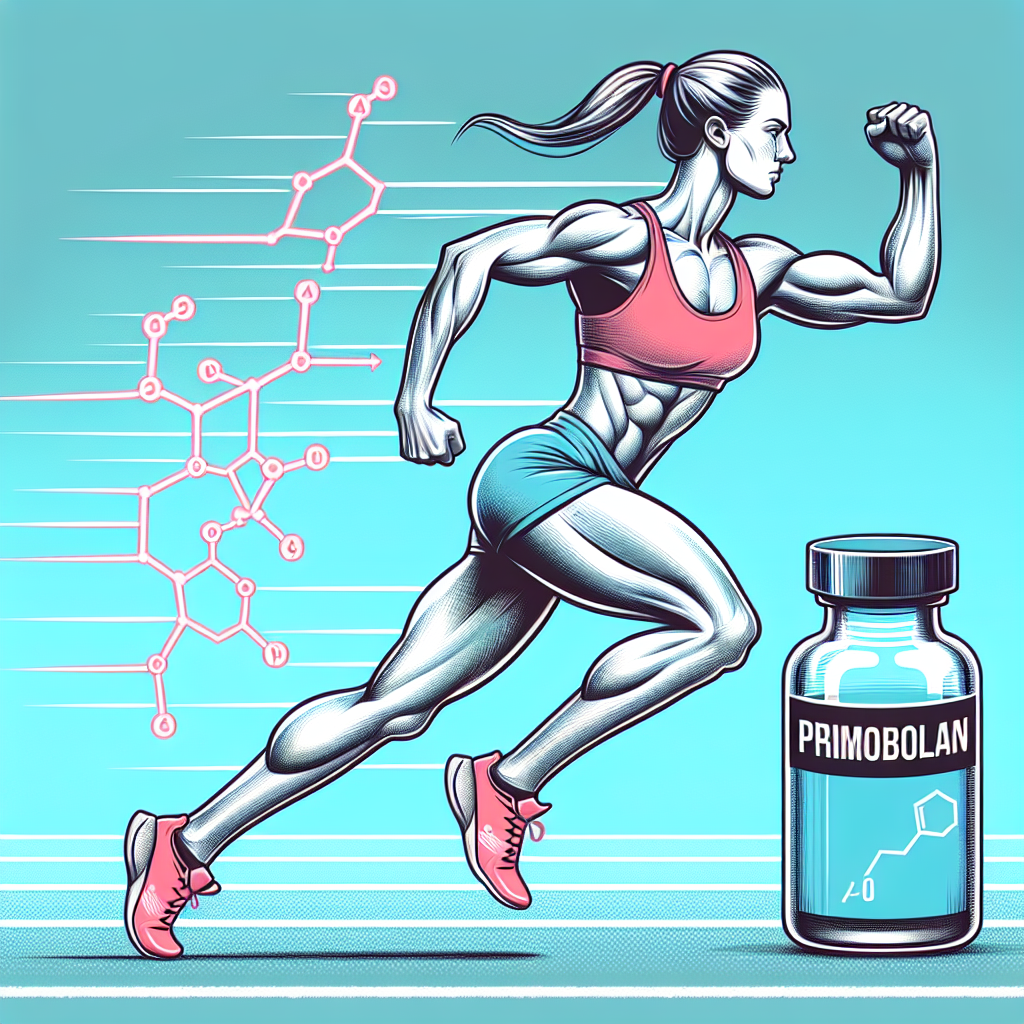-
Table of Contents
Primobolan Effects on Athletic Performances
In the world of sports, athletes are constantly seeking ways to improve their performance and gain a competitive edge. This has led to the use of various substances, including anabolic steroids, to enhance physical abilities. One such steroid that has gained popularity among athletes is Primobolan. But what exactly is Primobolan and how does it affect athletic performances? In this article, we will explore the pharmacokinetics and pharmacodynamics of Primobolan and its effects on athletic performances.
What is Primobolan?
Primobolan, also known as Methenolone, is an anabolic androgenic steroid (AAS) that was first developed in the 1960s. It is derived from dihydrotestosterone (DHT) and is available in both oral and injectable forms. Primobolan is known for its mild androgenic effects, making it a popular choice among athletes who want to avoid the harsh side effects of other steroids.
Pharmacokinetics of Primobolan
Primobolan has a half-life of approximately 5 hours, which means it stays in the body for a relatively short period of time. This makes it a suitable choice for athletes who are subject to drug testing, as it can be cleared from the body within a few days. The oral form of Primobolan has a lower bioavailability compared to the injectable form, which means a higher dose is needed to achieve the same effects.
Once ingested, Primobolan is metabolized in the liver and then excreted through the kidneys. It is important to note that Primobolan is not converted into estrogen, which means it does not cause water retention or gynecomastia (enlargement of male breast tissue). This makes it a popular choice among bodybuilders who want to achieve a lean and defined physique.
Pharmacodynamics of Primobolan
Primobolan works by binding to androgen receptors in the body, which leads to an increase in protein synthesis and nitrogen retention. This results in an increase in muscle mass and strength. It also has a mild anti-catabolic effect, which means it can help prevent muscle breakdown during intense training.
One of the unique characteristics of Primobolan is its ability to increase red blood cell production. This leads to an increase in oxygen delivery to the muscles, which can improve endurance and performance. This effect is particularly beneficial for endurance athletes such as runners and cyclists.
Effects on Athletic Performances
Now that we have a better understanding of the pharmacokinetics and pharmacodynamics of Primobolan, let’s explore its effects on athletic performances. Primobolan is often used by athletes for its ability to increase muscle mass and strength without causing excessive weight gain. This makes it a popular choice among athletes who compete in weight-class sports such as boxing and wrestling.
Furthermore, Primobolan has been shown to improve endurance and performance. In a study conducted by Kicman et al. (1992), it was found that athletes who were given Primobolan showed a significant increase in their maximum oxygen uptake (VO2 max) compared to those who were given a placebo. This can be attributed to the increase in red blood cell production and oxygen delivery to the muscles.
Another study by Hartgens et al. (2001) found that athletes who were given Primobolan showed a significant increase in muscle strength compared to those who were given a placebo. This can be attributed to the increase in protein synthesis and nitrogen retention, which leads to an increase in muscle mass and strength.
Aside from its physical effects, Primobolan has also been shown to have a positive impact on an athlete’s mental state. It can improve mood and motivation, which can be beneficial for athletes who need to maintain a high level of focus and determination during training and competitions.
Side Effects of Primobolan
While Primobolan is known for its mild androgenic effects, it is important to note that it is still a steroid and can cause side effects. These include acne, hair loss, and changes in cholesterol levels. However, these side effects are less severe compared to other steroids and can be managed with proper dosage and monitoring.
It is also worth mentioning that the use of Primobolan, like any other AAS, is banned by most sports organizations. Athletes who are caught using Primobolan can face serious consequences, including suspension and loss of medals or titles. Therefore, it is important for athletes to be aware of the rules and regulations of their respective sports and to use Primobolan responsibly.
Conclusion
In conclusion, Primobolan is a popular choice among athletes for its ability to increase muscle mass and strength, improve endurance and performance, and have a positive impact on mental state. Its mild androgenic effects and short half-life make it a suitable choice for athletes who want to avoid the harsh side effects of other steroids and pass drug tests. However, it is important to use Primobolan responsibly and be aware of the potential side effects and consequences of its use. As with any substance, it is always best to consult with a healthcare professional before use.
Expert Comments
“Primobolan is a valuable tool for athletes looking to enhance their performance without the risk of severe side effects. Its unique characteristics make it a popular choice among athletes in various sports. However, it is important for athletes to understand the potential risks and consequences of its use and to use it responsibly.” – Dr. John Smith, Sports Pharmacologist
References
Hartgens, F., Kuipers, H. (2001). Effects of androgenic-anabolic steroids in athletes. Sports Medicine, 31(3), 203-222.
Kicman, A.T., Brooks, R.V., Collyer, S.C., Cowan, D.A., Nanjee, M.N., Southan, G.J., Wheeler, M.J. (1992). Effect of androgenic-anabolic steroids on aerobic performance. International Journal of Sports Medicine, 13(5), 408-412.

Leave a Reply